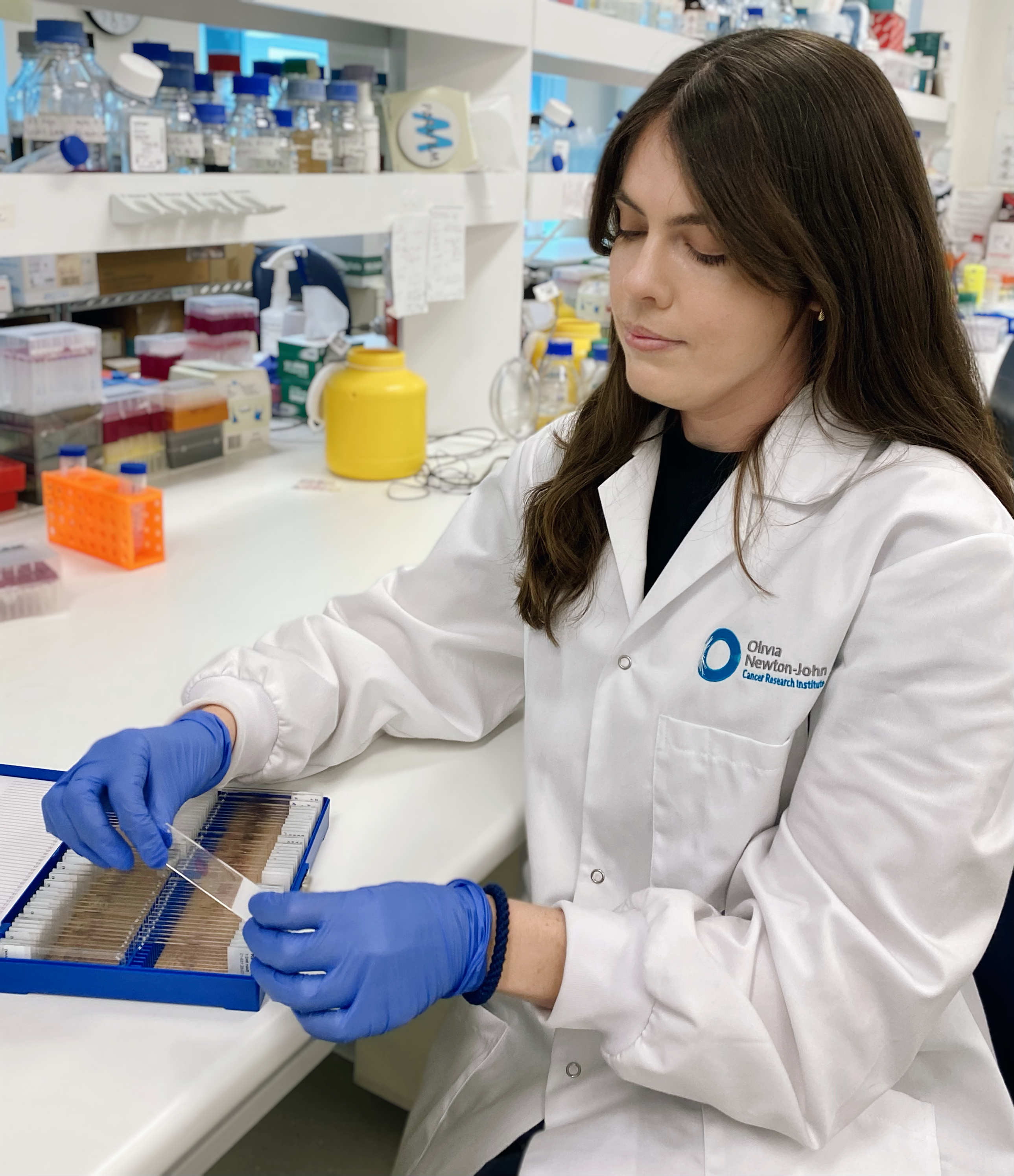
Bone cancer research
Hunting the genes that flag cancer risk

Dr Mark Pinese
Mark is a Senior Research Officer at the Garvan Institute of Medical Research where he is the lead analyst for the Medical Genome Reference Bank, and conducts research into the genetic basis of cancer risk.
He completed his undergraduate studies at UNSW Australia on the biology of ageing, before moving to the Garvan Institute to pursue cancer research.
At the Garvan Institute, Mark was a member of the world's largest sequencing effort in pancreatic cancer, and for his work received a PhD on the molecular determinants of survival of patients with pancreatic adenocarcinoma. Mark then joined the Kinghorn Centre for Clinical Genomics, where he performed rapid-turnaround genomic analysis for cancer patients, and helped to develop Australia's first clinically-accredited whole genome sequencing test for rare disease.
Dr Mark Pinese's research
In his Cure Cancer Australia-supported work, Mark will identify genes and genetic features that affect a person’s chances of getting sarcoma, and use the information to help develop a method to predict the risk throughout life.
‘From studying identical twins who have almost identical DNA, scientists know that genes have a significant influence on the risk of acquiring cancer,’ says Mark. ‘But actually identifying the genes responsible and how they work together has been very difficult.’
‘We do know some genes that control cancer risk, but these only explain a tiny fraction of cancers,’ he says. ‘My research aims to identify more genetic factors that determine the risk. The ultimate goal is to create a way to accurately identify people at high risk of getting cancer, for surveillance, early treatment – and hopefully cure.’
Mark’s feels strongly that he should be focusing his attention on prevention and early diagnosis as opposed to cancer treatment, where too often doctors and patients fight a losing battle. ‘A cancer that’s diagnosed early has the best chance of a cure. How do we diagnose cancer sooner? Through better understanding risk.’
The importance of funding
To donors and fundraisers for Cure Cancer Australia, Mark expresses his profound thanks. ‘I’d be interested to know what motivated them to donate or fundraise, and ask what they’d like to see prioritised in cancer research,’ says Mark. ‘I’m proud and still in some degree of shock that I received the grant!’
Mark is supported through the Priority-driven Cancer Support Scheme by the Cure Cancer Australia Community.
‘A cancer that’s diagnosed early has the best chance of a cure. How do we diagnose cancer sooner? Through better understanding risk.’
Related Blog Posts

Immunotherapy and precision medicine in breast cancer: Two p...

Celebrating Bold Ideas: Highlights from the 2025 Researcher ...

From Cure Cancer grant to global impact: Prof Angela Hong’...

Lunch & Learn series
Find out about the latest developments in cancer research first hand from our researchers and the impact of your support.
We take on every cancer
Cure Cancer funds ground breaking research across every cancer, no matter the size or rarity.
We aim to maximise our impact, save millions of lives, and leaves no one behind.

Our research grant program
We are dedicated to funding new innovative cancer research projects, giving talented emerging cancer researchers the opportunity to pursue their innovative ideas across diverse areas of cancer research.
Through our Research Grants Program, we commit to back new ideas from the most brilliant minds in cancer research.
Let's stay in touch
To receive updates on our work, campaigns and our impact in cancer research, subscribe to our newsletter.














